
🤯 5 most common problems in sublimation
🤯 5 most common problems in sublimation

Any customization technique poses certain initial difficulties, which are part of the natural learning process. In this case, we are going to highlight five common problems in sublimation that customization professionals often face during their training process.
Read on and you can save yourself headaches, because we offer you the solution to each of these problems.
Banding in sublimation
If when printing you notice certain lines where ink is missing, this is a banding problem. And usually, the cause is a clogging of the printheads. All inks, both sublimation and non-sublimation, dry out over time. When this happens inside the printheads, the flow of ink is interrupted and this results in ink missing bands in the print.
If you print regularly (at least several times a week), the ink will not dry out inside the printheads. But if your workflow does not require this print frequency, you may suffer from banding problems.
The easiest way to avoid this problem is to activate a small flow of ink through the printheads using the printhead cleaning function of the printer. However, other sublimation printers require regular manual printhead cleaning, but it is as simple as pressing a button.
Apart from clogged printheads, the problem of banding will also occur when ink runs out. So before looking for other causes, check that your printer has enough ink.
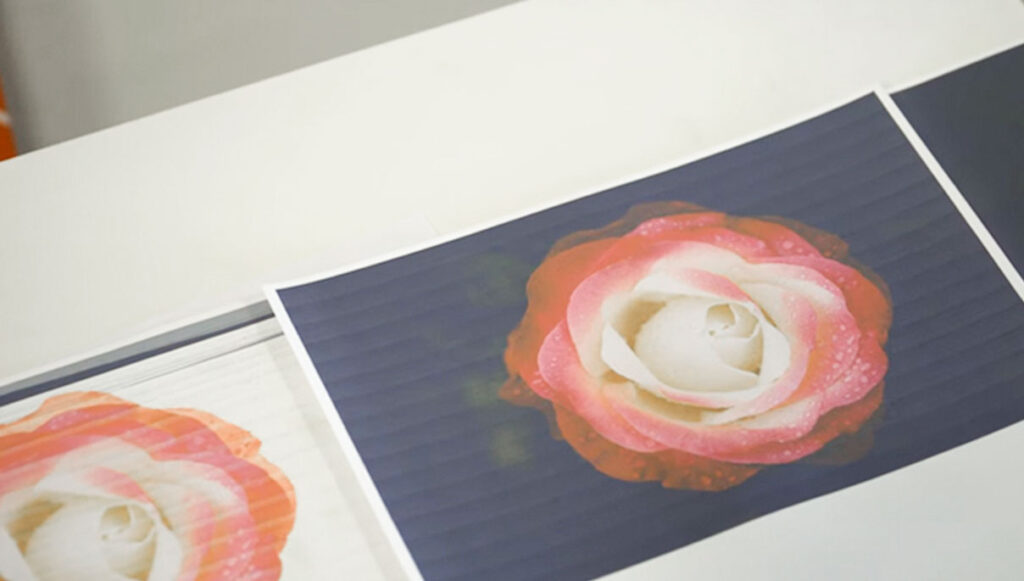
Moisture problems
Moisture in the sublimation process can produce undesirable effects. During sublimation, the transfer plate generally operates at 200°C, and the accumulated moisture is instantly transformed into steam causing ink displacement. Moisture accumulation problems can result in color shift (colors become less accurate), color bleeding in images and irregularity in spot colors.
Under normal circumstances, sublimation paper may accumulate some moisture and this moisture will generally dissipate on the customizable item during ironing. However, some rigid substrates, such as metal panels and ceramic products, do not allow moisture dissipation. For this reason, it is important to adopt certain preventive measures to minimize the presence of moisture in these processes:
- Protect the sublimation paper from humidity. To do so, you should store it in a dry place, inside a container or a self-sealing bag. If you think the paper has accumulated moisture, place it in the iron for a few seconds without closing the iron. The heat of the transfer iron will evaporate the moisture.
- When sublimating T-shirts, it is recommended to pre-iron the T-shirt for 6 to 10 seconds to remove moisture.
- If you are going to personalize rigid items, such as photographic panels, tiles, mugs, etc. that have been stored in cold places, it is advisable to pre-iron the item before personalizing it. The ironing time will depend on the dimensions of the item, and can range from 30 to 60 seconds.
The optimum environmental conditions for sublimation are a temperature of 20ºC - 26ºC and a relative humidity of 35% - 65%.
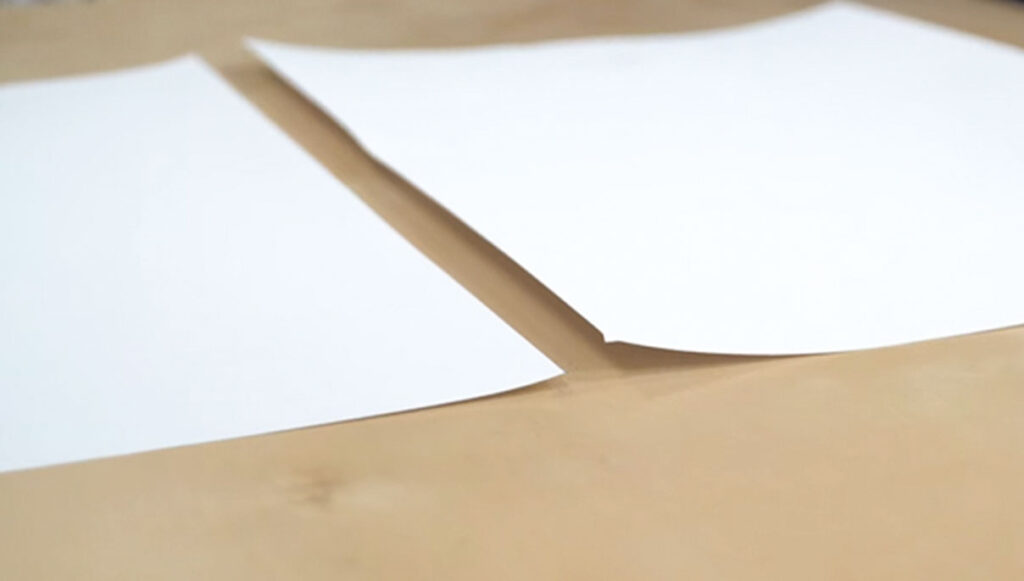
Ghosting effect in sublimation
In sublimation, during ironing, the printed paper must remain in contact with the sublimatable surface without moving. If the paper moves, blurred images will be generated , which is also known as the ghosting effect of sublimation or ghosting effect.
To avoid this problem, it is essential to keep the printed image fixed on the sublimatable item. Use thermal adhesive tape to attach the paper to the product. Do not use a large piece of tape over the entire surface of the paper because it may affect the image quality. Simply glue the edges of the paper to the product. Always use the minimum amount of tape necessary for easy removal of the paper after sublimation.
When removing the paper, it is important that you do not slide the paper over the surface of the product because you may generate a blurred image. Lifts the paper from one end, quickly and cleanly.
The teflon film may also generate blurred images if it is dirty, to avoid this we recommend you to always use protective paper which will protect the base of the griddle and also the upper plate.
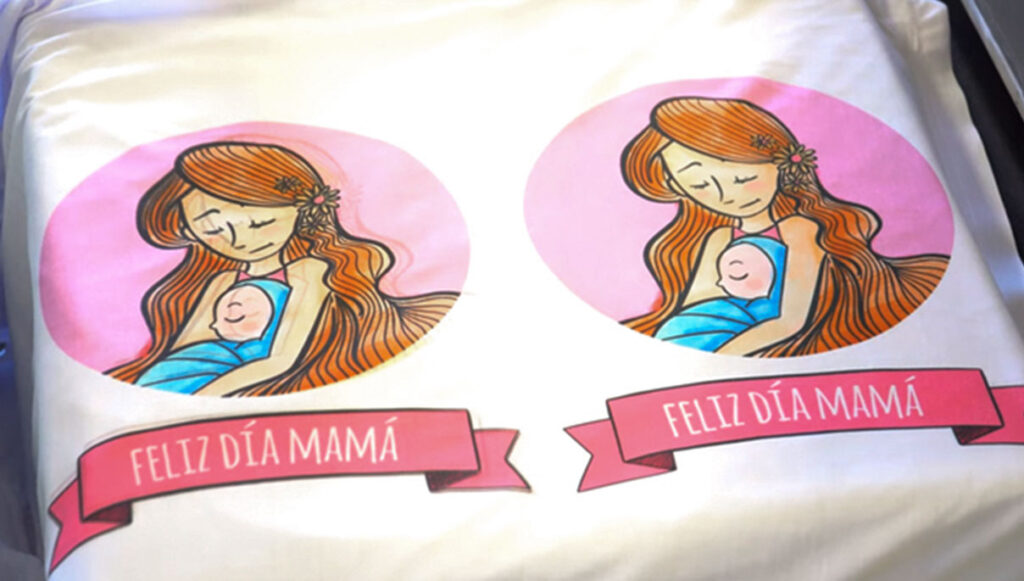
Incorrect colors
The computer screen reproduces colors in RGB format, while the printer prints in CMYK. Therefore, it is necessary to install on the computer the driver that will perform the color management and translate the colors from one format to another. The supplier of the sublimation inks must provide free of charge the color profile appropriate to the type of inks and printer model.
However, the design printed on paper in your sublimation printer will not show the final colors. You will have to iron on the product to be able to appreciate the final colors. You can also create a color chart to use as a reference, and be able to relate the final production colors to the colors you see on the screen.
To do this, you can print the color palette used by the sublimation printer driver, and iron this print onto the customizable fabric/substrate. This way, you will have a visual reference of the final colors and you can select your colors based on this color chart.
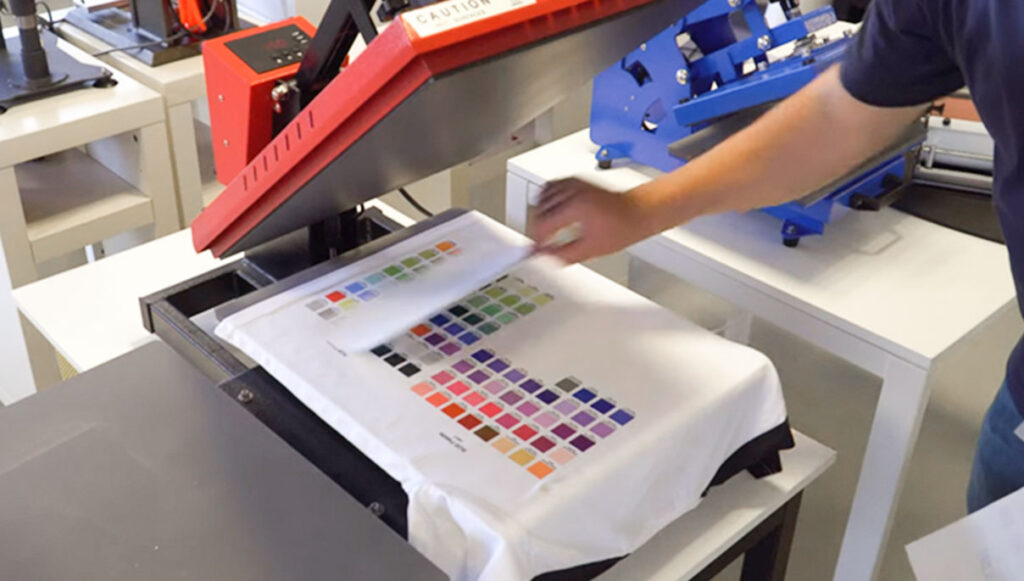
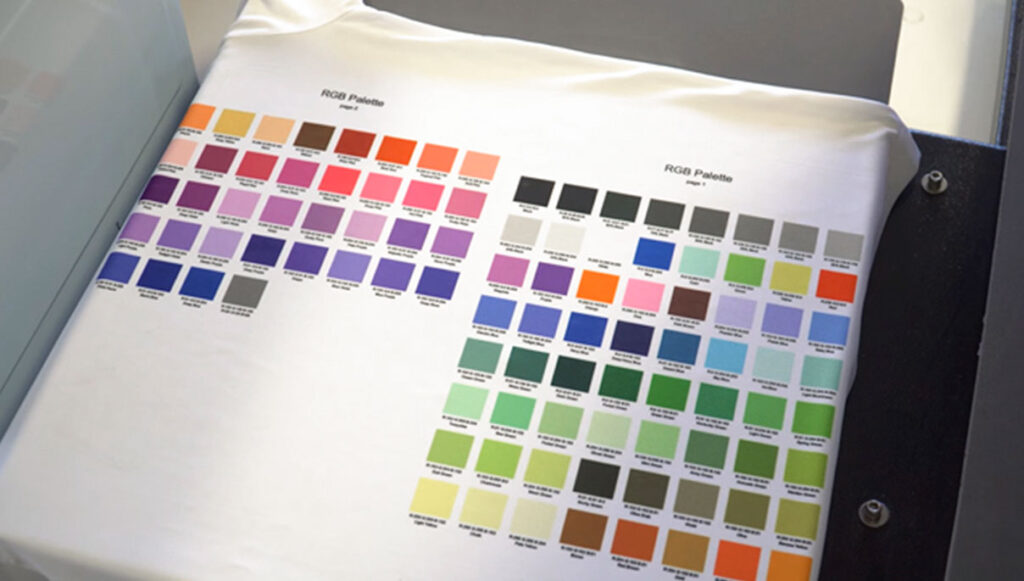
Ironing brands
On polyester garments it is a common problem that the edges of the sublimation paper generate permanent marks when ironed. In some cases, these marks soften when the garment is washed, but in other cases it is a problem that does not go away.
To solve this problem, you could use less pressure, less time or even less temperature during ironing to soften this effect. Experiment with each of these variables separately and check the result. Keep a written record of all these settings to identify which one is best for a given fabric.
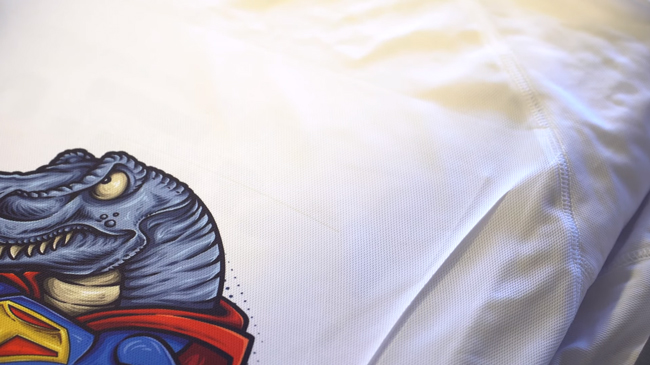
If you have any questions or if we have left anything out, leave us a comment so we can help you. You can also contact our Customer Service department.
Remember to check our social media, where we post plenty of ideas, offers and news from all areas of personalisation. Follow us on Instagram and Facebook to make sure you don't miss anything. Don't forget to subscribe to this Blog and to our Youtube channel.
If you liked it, don't leave without leaving your five stars!
See you soon in a new post!
-
Hi... We are doing dye sublimation for event panel. we are using dye sublimation printer for print on paper and then transfering on fabric with heat transfer machine in roll format. we are facing issue after some days some of print images pattern like letters seen on white area after fold the fabric. if you share your mail id then i can share some of images. so, can you help on this.
-
Is an item done in this process safe from uv damage?
WE WANT TO KNOW WHAT YOU THINK
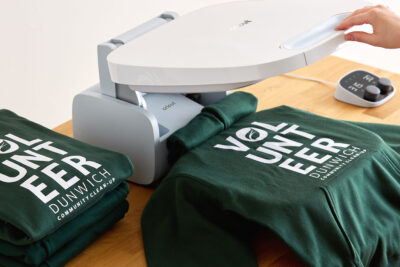


You may also like